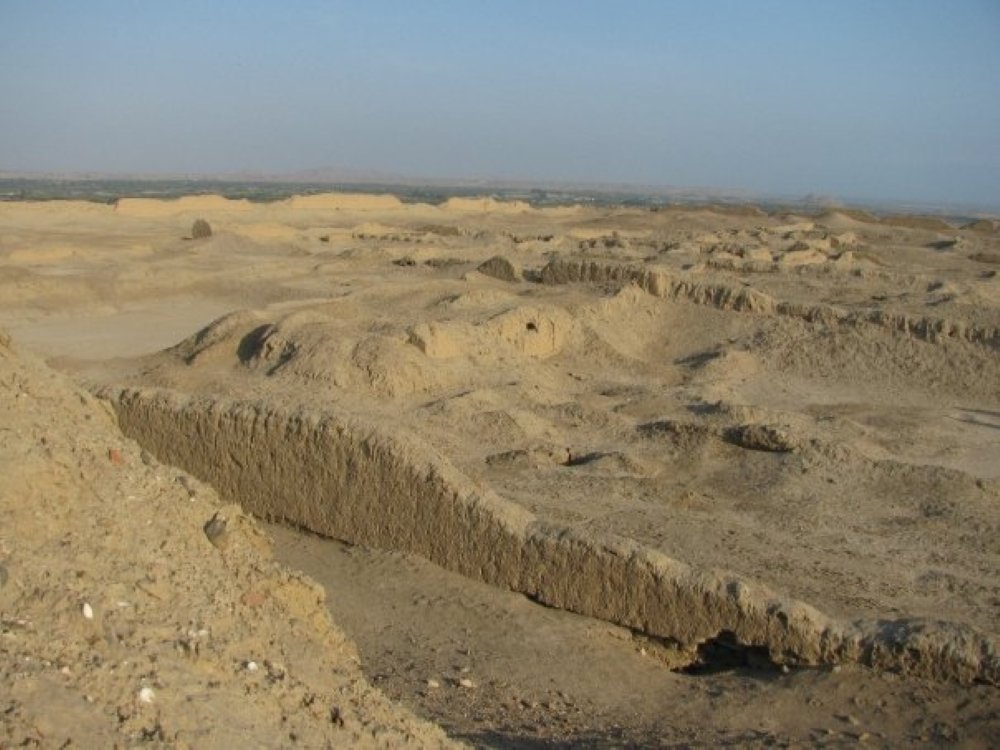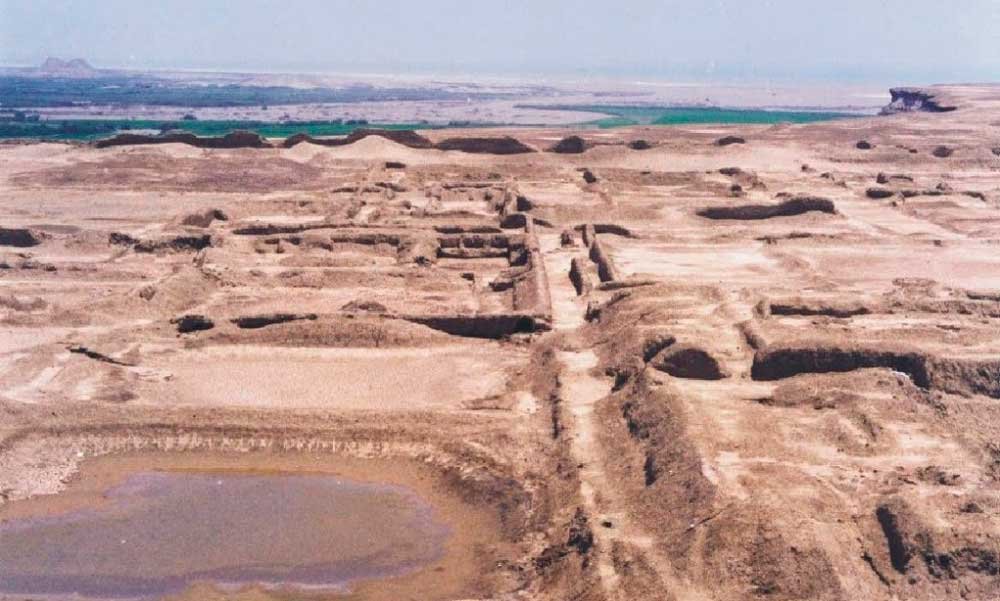Pakatnamu Archaeological Complex
The Pakatnamu Archaeological Complex is located in the region of La Libertad, Peru. It is an important archaeological site located near the city of Trujillo. Pakatnamu was a pre-Inca city of the Moche culture, which flourished between the 1st and 7th centuries AD.
It is known for its impressive adobe structures and for its rich cultural and architectural history. The site has revealed numerous archaeological finds that have helped researchers better understand the life and practices of the Moche civilization.
History
The Archaeological Complex of Pakatnamu, also known as El Brujo, is a site of significant historical and archaeological importance located in the La Libertad region, northern Peru. Here is a summary of its history:
- Moche Culture (1st to 7th century AD): Pakatnamu was an important city during the Moche culture period, a pre-Inca civilization that thrived along the northern coast of Peru. The Moche culture was renowned for its advanced skills in pottery, metallurgy, and the construction of large adobe structures.
- Discovery and Exploration: The archaeological site of Pakatnamu was discovered in the 1970s and has since been the subject of various archaeological investigations and excavations. Studies at the site have revealed a series of stepped pyramids, platforms, ceremonial courtyards, and tombs adorned with murals and reliefs.
- The Lord of Sipán: Although not directly related to Pakatnamu, it is worth noting that the discovery of the famous Lord of Sipán in 1987 near Chiclayo, another important Moche city, renewed interest in Moche culture and archaeological sites in the region, including Pakatnamu.
- Cultural and Ceremonial Importance: Pakatnamu served as a key ceremonial and administrative center for the Moche culture, where religious rituals and important ceremonies took place. The architectural structures and artifacts found at the site provide evidence of the social and religious complexity of this ancient civilization.
- Current Status: Today, Pakatnamu is open to the public as an archaeological site and attracts visitors interested in exploring Moche history and culture. It has been partially restored to preserve its structures and allow tourists and scholars to visit.
In summary, the Archaeological Complex of Pakatnamu is an invaluable testament to the Moche civilization and plays a crucial role in understanding the pre-Columbian history of Peru, particularly in the La Libertad region.
What can we find in the archaeological complex of Pakatanumu?
At the Archaeological Complex of Pakatnamu, visitors can explore a variety of structures and artifacts that offer a fascinating glimpse into the Moche civilization and its social and religious organization. Here are some of the highlights that can be found at Pakatnamu:
- Stepped Pyramids: The site features several stepped pyramids built with adobe, characteristic of the monumental architecture of the Moche culture. These pyramids served as ceremonial and administrative platforms.
- Platforms and Courtyards: In addition to pyramids, Pakatnamu includes various platforms and ceremonial courtyards likely used for religious rituals and public activities.
- Decorated Tombs: Several tombs have been discovered at Pakatnamu, some adorned with murals and reliefs depicting scenes of daily life, ceremonies, and important figures of Moche society. These tombs provide valuable insights into funerary practices and social hierarchy of the time.
- Ceramics and Artifacts: Reflecting the Moche’s artistic and technical skills, numerous finely crafted ceramic artifacts have been found at Pakatnamu, including vessels, sculptures, and decorative objects used for both utilitarian and ceremonial purposes.
- Irrigation Systems: Studies suggest that Pakatnamu may have had advanced irrigation systems and water management techniques, crucial for agriculture in the arid northern region of Peru.
- Murals and Decorations: The walls of structures at Pakatnamu often feature murals depicting geometric patterns, human figures, and mythological and ceremonial scenes, offering insights into Moche beliefs and iconography.
Overall, the Archaeological Complex of Pakatnamu is an archaeological treasure trove that provides a unique window into the world of the Moche culture, showcasing their art, architecture, and social complexity.

How to get to Pakatnamu?
To reach the Archaeological Complex of Pakatnamu (El Brujo) located in the La Libertad region of Peru, you can typically follow these steps:
- From Trujillo: The most common way to get to Pakatnamu is from the city of Trujillo, which has an international airport and land connections from other parts of the country.
- By private transportation: If you have your own or rented vehicle, you can take the Pan-American Highway North from Trujillo heading towards the north. The approximate distance from Trujillo to Pakatnamu is around 70-80 kilometers, depending on the exact route you choose.
- By public transportation: You can also reach Pakatnamu by public transport. From Trujillo, you can take an interprovincial bus to the town of Magdalena de Cao, which is close to the archaeological complex. Buses heading towards Chiclayo or other northern destinations in Peru often pass through this area.
- Organized tours: Another option is to join an organized tour from Trujillo that includes Pakatnamu and other nearby archaeological sites. These tours usually provide transportation, a guide, and often include visits to other points of interest in the region.
- Considerations: It’s advisable to check bus schedules and road conditions before planning your trip. Also, make sure to bring enough water, sunscreen, and comfortable clothing as the region can be hot and dry, especially during the day.
Pakatnamu is an impressive archaeological site worth visiting to explore the rich history of the Moche culture in northern Peru.
Recommendations for visiting the archaeological complex of Pakatnamu
To make the most of your visit to the Archaeological Complex of Pakatnamu, here are some recommendations:
- Opening Hours and Days: Check the site’s opening hours before planning your visit. Archaeological sites in Peru often have specific visiting hours, so ensure you arrive during the permitted times to explore adequately.
- Transportation: If traveling from Trujillo, consider the transportation options mentioned earlier (private vehicle, public bus, or organized tour). Private transport offers flexibility, while organized tours typically provide additional amenities like knowledgeable guides.
- Guide: If possible, hire a local guide or join a guided tour. An experienced guide can provide detailed insights into the history, architecture, and customs of the Moche culture, enriching your experience.
- Physical Preparation: Pakatnamu may involve walking and exploration in a warm, dry environment. Wear comfortable walking shoes, lightweight clothing, sunscreen, a hat, and bring plenty of water to stay hydrated during your visit.
- Respect for the Site: As with all archaeological sites, respect local regulations and follow staff instructions. Do not touch or damage structures or artifacts, and make sure to carry out any trash you bring in.
- Photography: Bring a camera or smartphone with ample battery and storage capacity, as you’ll want to capture the impressive landscapes and ancient structures of Pakatnamu.
- Time Management: Allocate enough time to explore the archaeological complex at a leisurely pace and absorb all available information. In addition to time on-site, factor in travel time to and from Trujillo.
- Interpretation of the Site: Take advantage of any interpretative materials available at the site, such as informational panels or brochures, to gain a deeper understanding of what you’re seeing.
By following these recommendations, you’ll be able to enjoy a memorable visit to the Archaeological Complex of Pakatnamu, immersing yourself in the fascinating history and culture of the Moche civilization in Peru.












